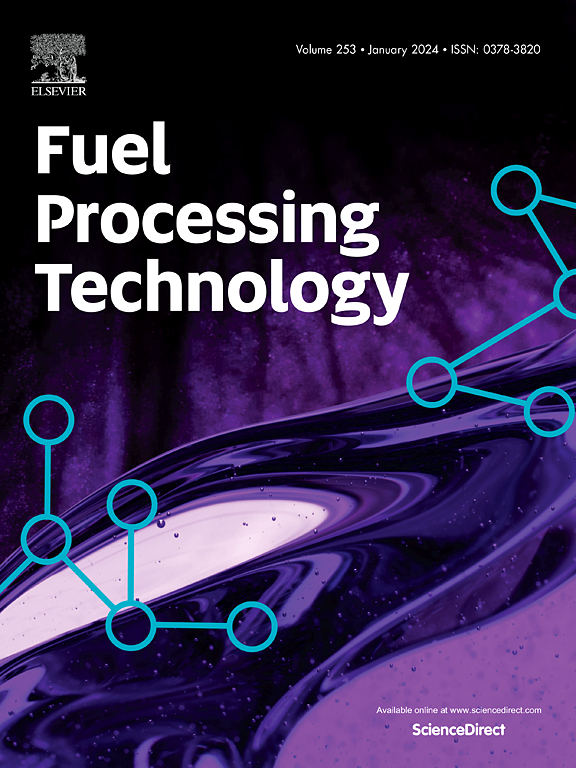Enhancing styrene production: CFD analysis of a Pd-based membrane reactor to carry out ethylbenzene dehydrogenation
IF 7.2
2区 工程技术
Q1 CHEMISTRY, APPLIED
引用次数: 0
Abstract
A two-dimensional symmetric CFD model was developed using COMSOL Multiphysics 5.2 to evaluate the performance of traditional reactors (TRs) and membrane reactors (MRs) in the catalytic dehydrogenation of ethylbenzene (EB). The model examined the influence of key operating parameters, including temperature, pressure, feed flow rate, and sweep gas-to-feed ratio, on EB conversion, styrene selectivity, and hydrogen flux. The results indicated higher reaction temperatures enhanced EB conversion but reduced styrene selectivity. Similarly, increasing the sweep gas-to-feed ratio improved EB conversion and hydrogen permeation, while higher pressure and weight hourly space velocity negatively affected EB conversion but improved styrene selectivity. All parameters, except pressure, showed a direct correlation with hydrogen flux. Compared to the TR, the MR demonstrated superior performance, achieving up to 96 % EB conversion, 95 % styrene selectivity, and pure hydrogen production. The MR exhibited a 12.5 % higher EB conversion and 36.5 % greater styrene selectivity than the TR. Moreover, integrating the catalytic membrane reactor (CMR) concept, which includes auxiliary benzene hydrogenation, further enhanced process efficiency, increasing EB conversion to 60.85 % and styrene selectivity to 96.68 %.
Additionally, a 14.5 % rise in the concentration polarization coefficient was observed with an increased sweep gas-to-feed ratio, whereas a 3.09 % reduction occurred with higher weight hourly space velocity. Temperature and pressure increases led to 3.95 % and 3.80 % rises in the polarization coefficient, respectively. These findings underscore the advantages of MRs and CMRs over conventional TRs in improving conversion efficiency, selectivity, and hydrogen purity.
求助全文
约1分钟内获得全文
求助全文
来源期刊

Fuel Processing Technology
工程技术-工程:化工
CiteScore
13.20
自引率
9.30%
发文量
398
审稿时长
26 days
期刊介绍:
Fuel Processing Technology (FPT) deals with the scientific and technological aspects of converting fossil and renewable resources to clean fuels, value-added chemicals, fuel-related advanced carbon materials and by-products. In addition to the traditional non-nuclear fossil fuels, biomass and wastes, papers on the integration of renewables such as solar and wind energy and energy storage into the fuel processing processes, as well as papers on the production and conversion of non-carbon-containing fuels such as hydrogen and ammonia, are also welcome. While chemical conversion is emphasized, papers on advanced physical conversion processes are also considered for publication in FPT. Papers on the fundamental aspects of fuel structure and properties will also be considered.
 求助内容:
求助内容: 应助结果提醒方式:
应助结果提醒方式:


